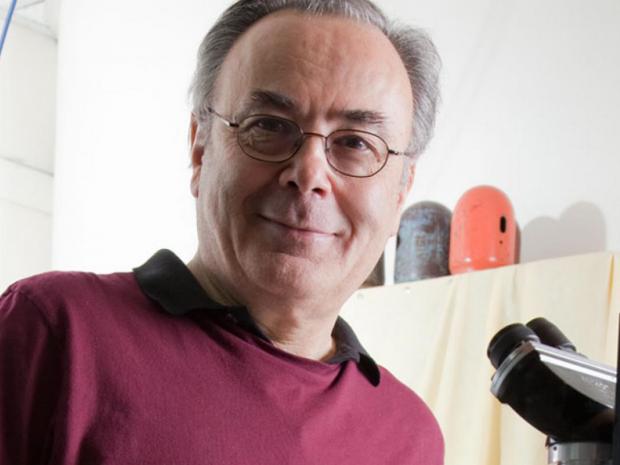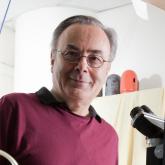From the Physics of Optical Alchemy to the Invention of the World’s Most Sensitive Bio-chemical Sensor

Stephen Arnold
Professor of Applied Physics and Chemical Engineering
NYU Polytechnic School of Engineering
Some time ago I began to think about optical analogs of electronic atoms and Molecules.1 The simplest of these is now known as the Photonic Atom (p-atom); analog of hydrogen. Let’s distinguish it from electronic atoms in the periodic table by calling them e-atoms. You might think this is kind of crazy and useless, but keep reading and your effort will be rewarded, because the p-atom is loaded with theoretical interest, applications, and a host of developing and possible technologies.
Confining a photon is sure to be one of the things that makes the idea sound crazy. However, there is a way to do this. It revolves around total internal reflection. A similar phenomenon occurs in acoustics. You can stand near the wall of a round gallery 40 meters in diameter in St. Paul’s cathedral in London and have a whisper heard by a friend diametrically opposed. They call this a Whispering Gallery, and the wave function is said to be a Whispering Gallery Mode. So what I thought of as a p-atom wave function is now known as a Whispering Gallery Mode (WGM), even though it is photonic. Since my original thoughts there have been well over 5,000 publications and hundreds of patents that utilize the optical WGM as a sensor. Most of those related to chemistry, bio-chemistry, and biology, but others are for the detection of temperature, pressure, shear stress, and acceleration.
This Whispering Gallery Mode sensor2 is like a tuning fork. When a particle binds to it the tone changes. However unlike a 1000 cycle/sec tuning fork, the p-atom’s WGM boosts the frequency to 400,000,000,000,000 cycles/sec, is only 40 millionths of a meter in radius, and as a consequence the sensitivity to particle binding is insanely increased! This leads to single virus3,4 and single protein sensing5 without the need for labels.
Join me to see if you can think up the next invention using Optical Alchemy.
[1] Arnold, S. (2001). Microspheres, Photonic Atoms and the Physics of Nothing: Light can become trapped within tiny, transparent spheres. The surprising properties that result may turn" microsphere photonics" into an important new technology. American Scientist, 89, 414-421.
[2] Vollmer, F., & Arnold, S. (2008). Whispering-gallery-mode biosensing: label-free detection down to single molecules. Nature methods, 5, 591-596.
[3] Arnold, S., Ramjit, R., Keng, D., Kolchenko, V., & Teraoka, I. (2008). MicroParticle photophysics illuminates viral bio-sensing. Faraday discussions, 137, 65-83.
[4] Vollmer, F., Arnold, S., & Keng, D. (2008). Single virus detection from the reactive shift of a whispering-gallery mode. Proceedings of the National Academy of Sciences, 105, 20701-20704.
[5] Dantham, V. R., Holler, S., Barbre, C., Keng, D., Kolchenko, V., & Arnold, S. (2013). Label-free detection of single protein using a nanoplasmonic-photonic hybrid microcavity. Nano letters, 13, 3347-3351.
